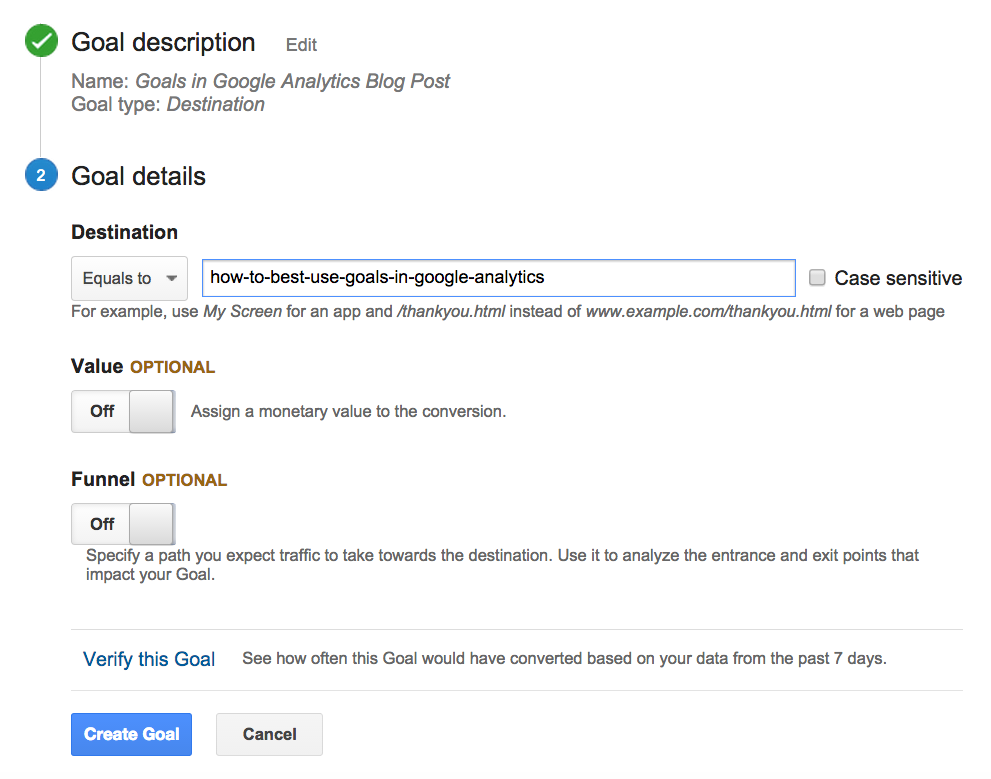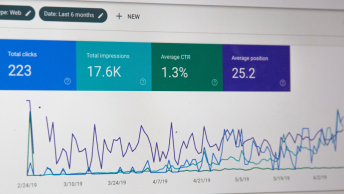Google Analytics goals shouldn’t be viewed as a badge of honor, they should be used to make informed decisions.
Here’s how to best use goals in Google Analytics.
In my home office, I have a plethora of accomplishments on my wall: degrees, certificates, awards, client photos and more. Every time I have a major accomplishment I frame it and place it on the wall. It’s actually starting to get a lil scary.
There’s a concern with this habit. Not that it conveys signs of being an overachiever, but the habit is reflected in my website administration. The goals achieved on my site are viewed similarly to the goals achieved and hung on the wall in my home office. Meaning, I just look at them.
I realize I need to constantly review my Google Analytics goals specifically to ensure I am optimizing my users’ experience and conversions. I don’t need to view them like trophies on a shelf.
Bottomline, as marketers, our efforts to move users to action can always improve. Let’s not rest on the fact that we are highly converting our website users, let’s use these goals to make better decisions going forward.
The first step is to identify what goals are needed…
Which Google Analytic Goals Do You Need?
A Google Analytics goal can represent various activities on your site which contribute to your success.
Here are a few examples:
- Making A Sale – This is probably the most important goal you will track as it obviously links your website performance to your bottom-line.
- Capturing A Lead – This is another important goal, especially if you do not conduct eCommerce transactions.
- Newsletter Sign-ups – It’s important to know what marketing activity is driving newsletter sign-ups. By using this goal, you can determine if an email campaign or a banner ad is driving newsletter sign-ups.
- New User Signups – If you manage a membership site, this is an important goal to track. It will provide you with insight such as knowing where users navigate when signing up. You can use this goal to reveal any challenges preventing user sign-ups.
- File Downloaded – If you have an e-book, an app, a cool infographic, users are downloading these items when they land on your site. Understanding what steps they took before the download will naturally help your streamline the process and cause even more downloads.
- Blog Comments – Blog comments are a great indication that readers are intrigued by your blog posts. By setting up a blog commenting goal, you can track the number of comments and take a deep dive into what content produces the most comments. Although you can manage comments through your blog, most blogs use third-party apps to manage blog comments. Unfortunately, they’re tracking limitations when using this app. I suggest reviewing the app to see if you can incorporate comment tracking in your Google Analytics.
How You Setup Google Analytics Goals
The first thing you do is login to Google Analytics. If you don’t have an account sign up at www.google.com/analytics. You will find the ‘Admin’ link at the top right:

Click on ‘Goals’ in the third column. Then Click on ‘New Goal’ button:

For this goal, I want to set up tracking visitors to this post…

Now we have to tell Google Analytics what exact page to track for this goal.

So, I’ve set the destination to the permalink of this post and I’ve set it to “Equals to” because I only want to track this post. You can set a variable such as “Begins with” or “Regular expression” so you can track multiple pages or a string of pages.
Voila! You’re done. It should only take you less than two minutes to set it up.
Final Thoughts
Setting up goals in Google Analytics is beneficial if you want to know how a website is helping you achieve your ‘goals’. What’s important, however, is how you use that information to help make informed decisions about your site.
As you make changes to your site, such as call-to-action buttons or landing pages, you’ll notice how the goal reporting will change as well. Use those changes to identify the best way to optimize your site.











